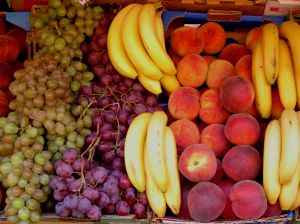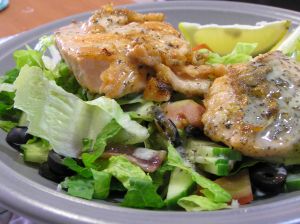Three "Poisons".
In the
diet and its importance for health, it is worth paying attention, in
particular, to the so-called spoiled carbohydrates, Western fast food
and food that is highly processed. This type of nutrition, consisting
of fat, white flour and a large amount of sugar, is the cause of many
diseases that occur in western countries and, increasingly, elsewhere.
Adult diabetes, cardiovascular diseases, constipation and bowel
diseases, cancer and gallstones are examples of this. These diseases
are hardly found in developing countries, where people's nutrition is
much more fibre-rich and more natural. Where the Western-style food
culture is more common, these problems are also more common.
A good
example of a change in diet are the Japanese and the Chinese. When
these people have lived in their own countries, they have hardly had
any cardiovascular or other diseases of living standards. However,
when Japanese or Chinese move to Hawaii where they are exposed to the
American food culture, their mortality rate increases. They have
gotten diseases that have only been seen in Western countries for
about 80 years. One cause of these diseases is food that contains very
little fiber and protective nutrients. Pies, sweets, sweetened soft
drinks, potato chips, doughnuts, fatty sausages and meat pies are
examples of such food:
When I ask my
patients, "Do you eat bad food?, many say firmly, "No, I don't. The
patient actually means that he does not eat strychnine, lead, or
spoilt food. I have thought that my diet is good and right, my
patients often explain as I monitor their diet diary and note that
they eat many processed "junk foods".
What is
"junk food" really? Junk is whatever food from which most of the
nutrients have been processed, refined and cleaned away. Two good
examples of this kind of food are white flour (in America, the most
commonly used flour) and white granulated sugar. Food that contains
noticeable amounts of these two ingredients must be regarded as junk
food, since its nutritive value to the body is non-existing.
White
flour and sugar are found in bread rolls. In addition, fat content of
hamburgers is high, which is unhealthy. There are no undigested mass
and fibers. There is a lot of sugar, caffeine, and color agents in
Coke. There are lots of calories and plenty of sugar in a milk shake
and beer. The nutrition value of a typical milk shake is much lower
than that of whole milk, and whole milk is also far from the perfect
and ideal food. This typical American meal must be regarded as junk
food" in its entirety. (29)
The so-called
junk food does not contain the most important protective agents
vitamins, minerals, and fibers. There are not many of these important
ingredients for the development of body and health, but instead junk
food contains many useless or harmful ingredients. Sugar, white wheat
flour, and animal fats are examples of such ingredients.
Sugar.
Sugar is one of those "poisons" that we may use too much. Sugar
consumption in Finland, for example, is 60 kilograms per person, and
in the United States the average annual consumption is about 80
kilograms a year per person. Such large figures are difficult to
believe, but sugar has been added to many foods and drinks. Sugar can
also be called saccharine, dextrose, fructose, and maltose. Sugar can
be found in many pastries, buns, sweets and ice creams, canned food
for babies, as well as mineral waters and lemonades. In an ordinary
1.5-liter bottle of lemonade, for example, there can be approximately
115 grams of sugar, or about 45 cubes of sugar or even more.
Sugar is
a substance that we do not need in our body. It contains empty
calories only and strains our body. Sugar does not contain any
important minerals, trace elements, or vitamins that can be found in
fruit and whole meal bread. In addition to this, it is one of the
leading causes of obesity and diseases caused by a high standard of
living. That is why much smaller amounts of sugar should be used than
are being used at present.
White
flour.
Another less nutritious food item that we may use quite a lot is white
flour and products made from it. (Similar "refined" nutrients also
include white polished rice, white macaroni and corn starch. A large
part of the important protective nutrients have been removed from
them.) When the average Finn eats approx. 74 kilos of flour a
year, no less than three quarters of that is white flour, which has
been cleaned of many important nutrients. The flour has been refined
in order to extend its shelf life and enhance its baking properties.
White bread, buns, hamburgers, doughnuts, pastries, rolls, and pizzas
are products that contain a lot of white flour.
What
happens if we eat too much white flour?
The answer
is that using large amounts of white flour is not any more reasonable
than using excessive amounts of sugar. Up to 90% of the necessary
vitamins, minerals, trace elements, and fibers have been removed from
white flour, and what is left is energy, just like in sugar. This kind
of food strains our body and is not useful when used to excess.
It has
been suggested that eating a diet of white pasta, white bread, and
white rice is one of the surest ways to increase levels of bad
cholesterol. It decreases the amount of good cholesterol, raises the
fat level in the blood, and produces small and harmful cholesterol
particles. Consuming too much can also increase the risk of
cardiovascular diseases.
Fat
- (Lev 3:17)
It shall be a perpetual statute for your generations throughout all
your dwellings, that you eat neither fat nor blood.
The third
food of which we eat too much is fat, animal and milk fats: cream,
cheeses, ice-creams, fatty milk, and fatty sausages; and hardened
vegetable fats such as pastries, fried food, doughnuts, chips, French
fries, pizzas, biscuits and some margarines. The average modern person
may get most of his or her energy from these ingredients that are
probably the largest cause of cardiovascular diseases. The use of
animal and milk fats as well as hardened vegetable fats is quite a
recent phenomenon; these ingredients have only been consumed for about
50 years. For example, in the United States, much less of these
ingredients were used a hundred years ago, and that is why not many
people suffered from cardiovascular diseases in those days. The food
at that time contained much grain and vegetables, and that is why they
did not have these diseases.
The next
newspaper article from 50 years ago describes this issue. It indicates
how, for example in Finland, eating food that was too fatty increased
the mortality rate from heart diseases. However, when there was less
of this "luxury food" during the war, the death rate from heart
disease also decreased as a result:
70% Increase in Use of Edible Fats in 50 Years
Christmas is
approaching fast and when the supply of fatty roast hams seems to
reach record levels this year, there is a reason to study the
consumption of edible fats in our country a little closer. According
to the market research department of the Pellervo Confederation of
Finnish Cooperatives, the consumption of edible fats (pork, lard etc.
as well as margarine and butter) in our country was in 1901 a total of
19.8 kilograms and in 1953 a total of 33.7 kilograms per person. (...)
Recently,
the conclusion has been reached that the more and more increasing use
of animal food ingredients, especially fats, is probably the main
reason for the alarming increase in cardiovascular diseases in all the
Western civilized countries.
It is certain
that diet is the most important factor. We can see it clearly when we,
for instance, think about the situation in our country during the war,
when our nerves really were strained and when we all lost weight
because of the lack of food, such as edible fats. During this
difficult and serious time of depression, doctors were greatly
surprised by the notable reduction in mortality due to cardiovascular
diseases and also many other diseases.
This
surprising fact clearly indicates that overeating and especially the
ample use of edible fats is one of the worst enemies to our health.
(Newspaper Helsingin Sanomat, 16 December 1954)


